Short Road Trip to San Francisco and Berkeley - October 2012
photos by G.P. Jones using Nikon Coolpix 4300 digital
camera, except where noted
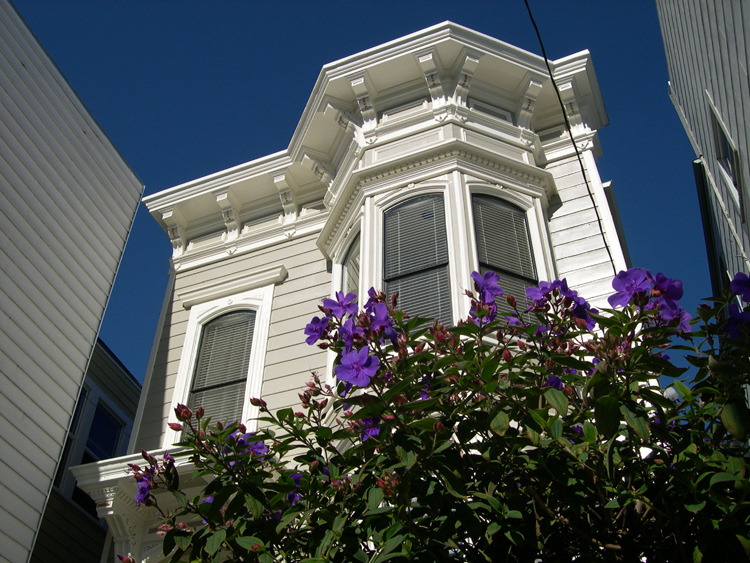
This trip essentially was a visit to San Francisco and Berkeley to see some church architecture (depicted below) and visit some libraries. First stop was San Francisco, where we start with some characteristic building design and flora.
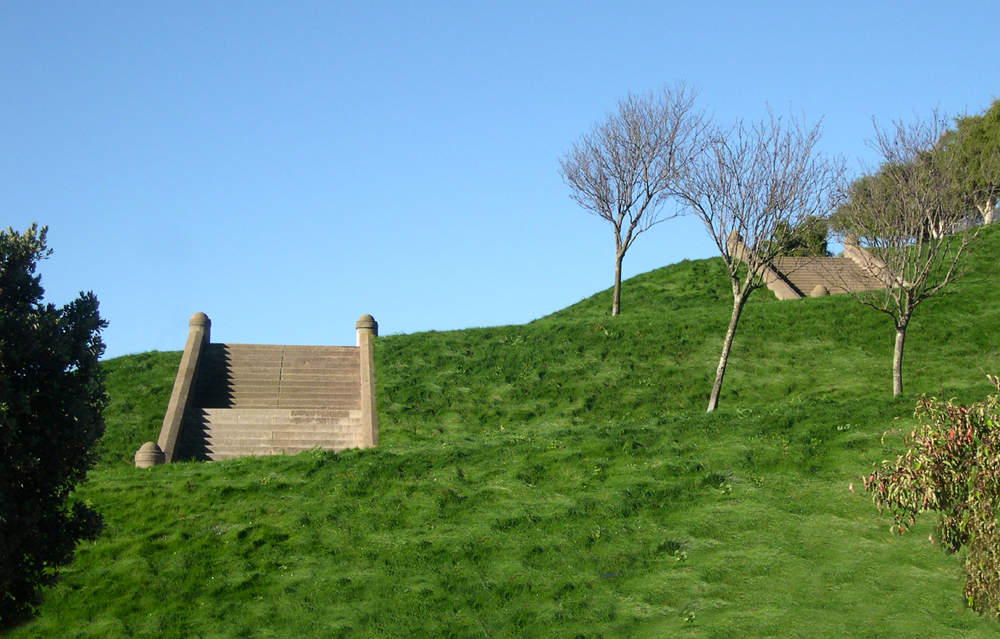
I've always been fascinated with stairways that appear to go nowhere or, in fact, go nowhere. Often such oddities are the remains of a house that's become a vacant lot while the stairway remains for the convenience of the ghosts, I suppose. In this case, it's just a steep angle in Alta Plaza Park, Steiner at Clay, in San Francisco.
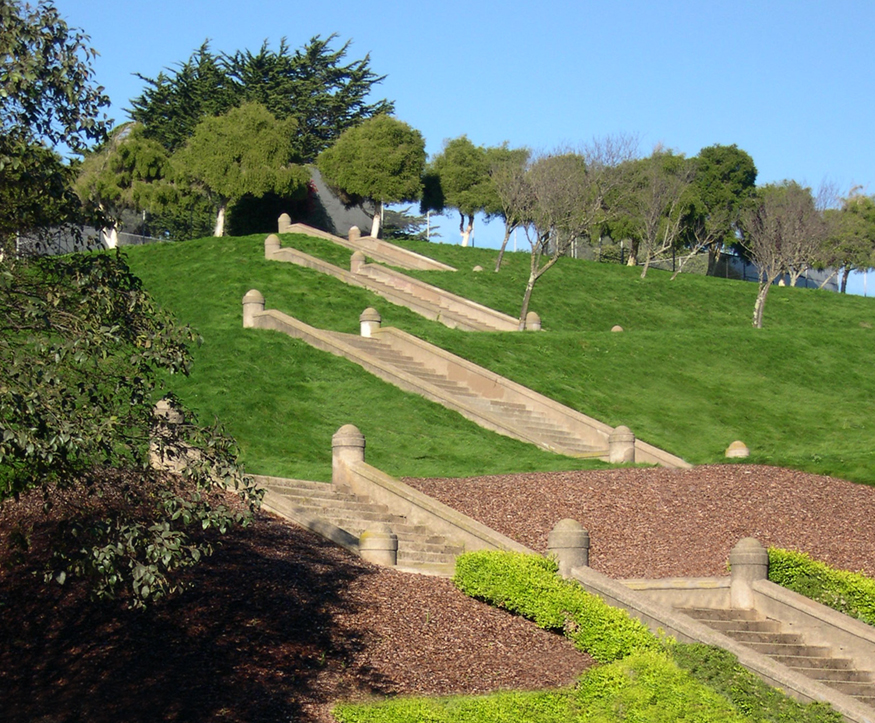
Another view of these seemingly pointless (but most useful, I can tell you) stairways. Much of the park, by the way, is fenced off for renovation which includes new water-conserving grass, among other upgrades.
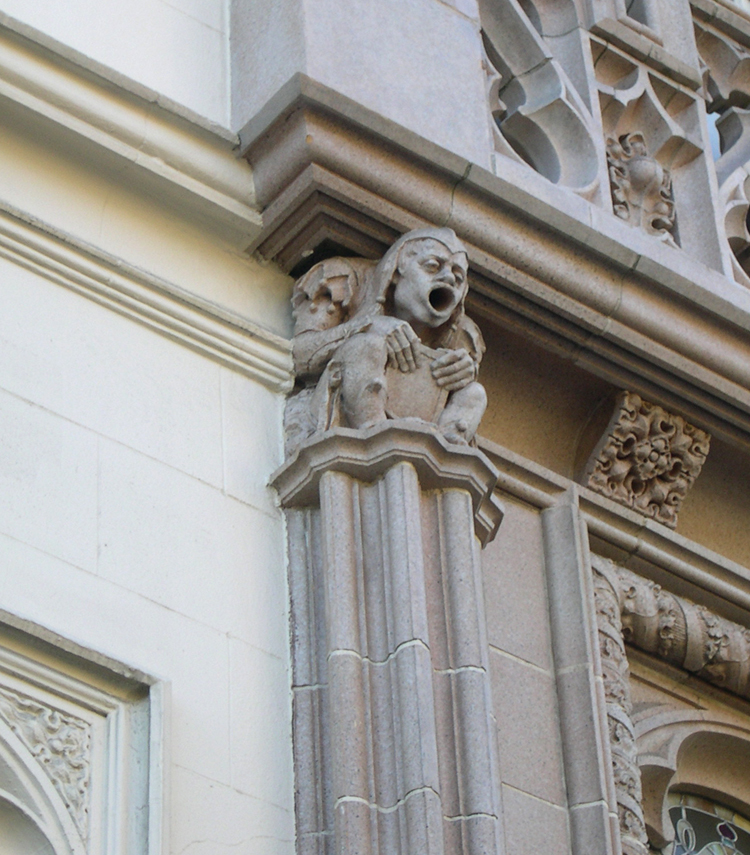
This gargoyle, at 2500 Steiner, just looks uncomfortable, somehow.
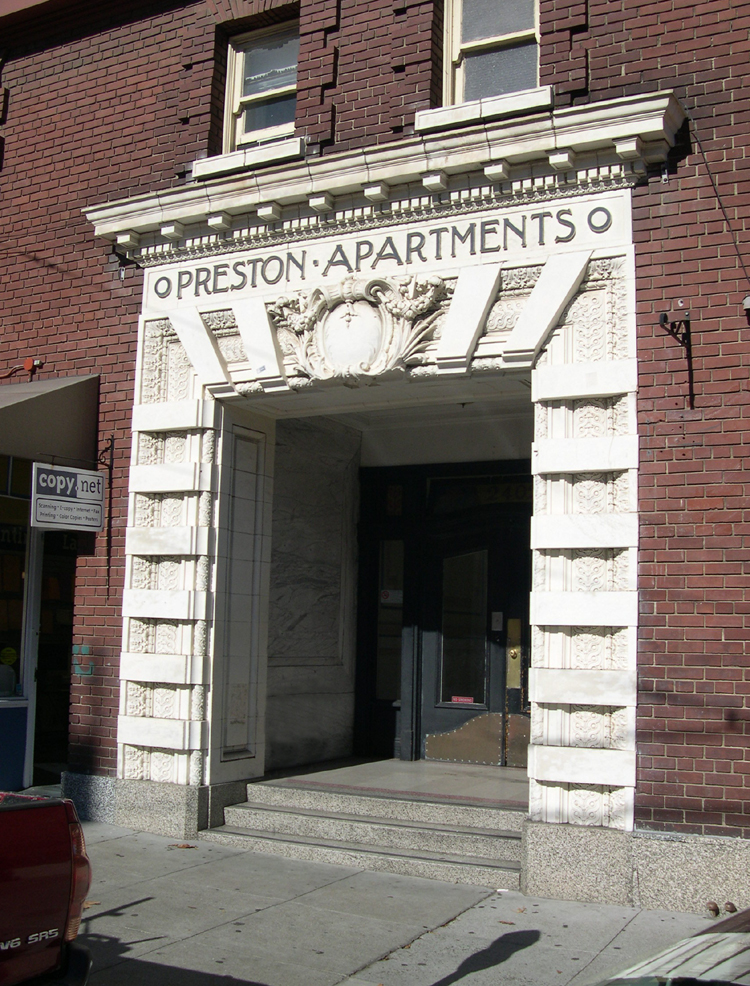
This is a run-of-the-mill apartment building, but it was (obviously) built at a time when even the average buildings were treated as something special. Think about it -- would an entry-way like this ever be built today on anything less than a technology-mogul's mansion?
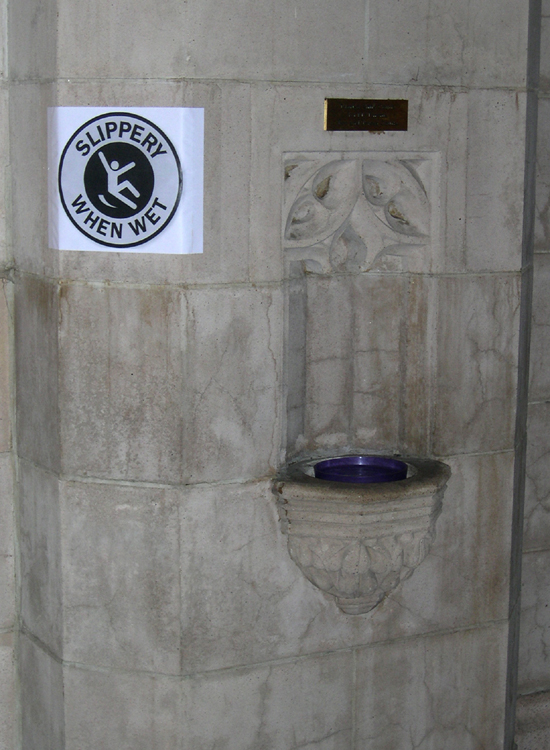
St Dominic's church seems to be warning people about unusual use of the Holy Water font. Or is that just my sick sense of humor?

A couple of years ago, I had the privilege of touring the magnificent Temple Emanu-El, seen here from a distance, situated just south of the Presidio. On that tour, the guide suggested that I would enjoy seeing the nearby Congregation Sherith Israel, though at that time it was closed, undergoing seismic retrofitting and other renovations. I put Sherith Israel on my "to-do" list, and made it a priority on this trip.

Sherith Israel sits nearly on top of a hill on California at Webster.
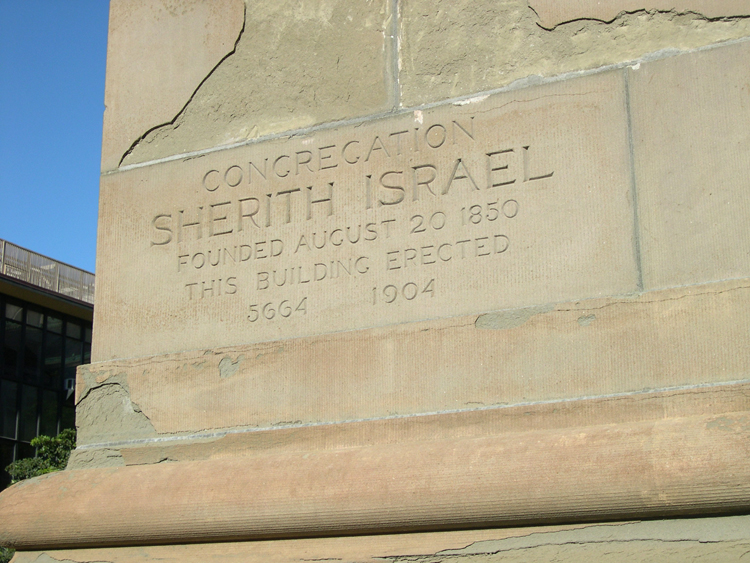
The building is (if I'm not mistaken) the third for this Congregation which was founded in 1850. It was built, as you can see, in 5664, two years before the great quake of 5666.
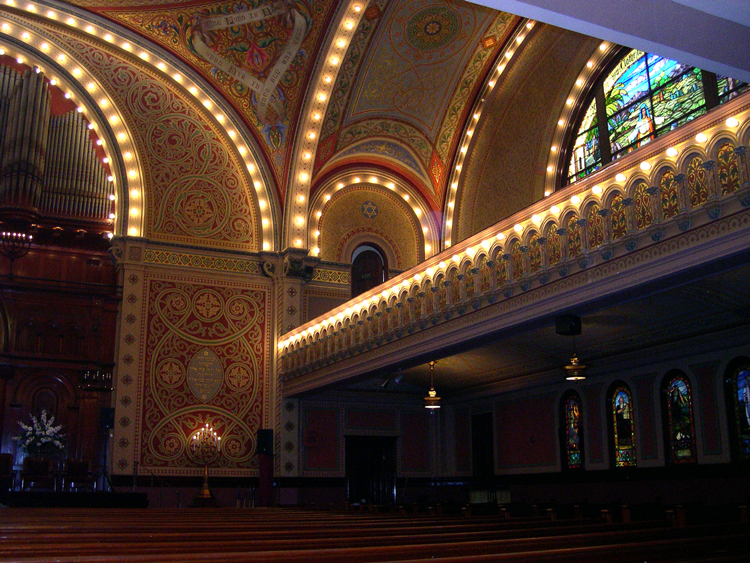
The interior of Sherith Israel is remarkable in many ways. It was Saturday, just before services, so the lights were on.

The view of the balcony seating shows several features, including the signature arches, stained glass and dark wood.
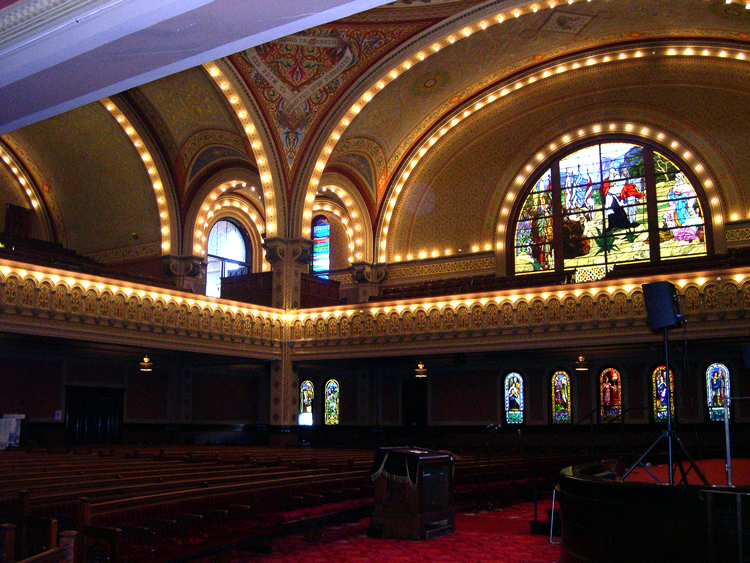
Compare this view with the next . . .
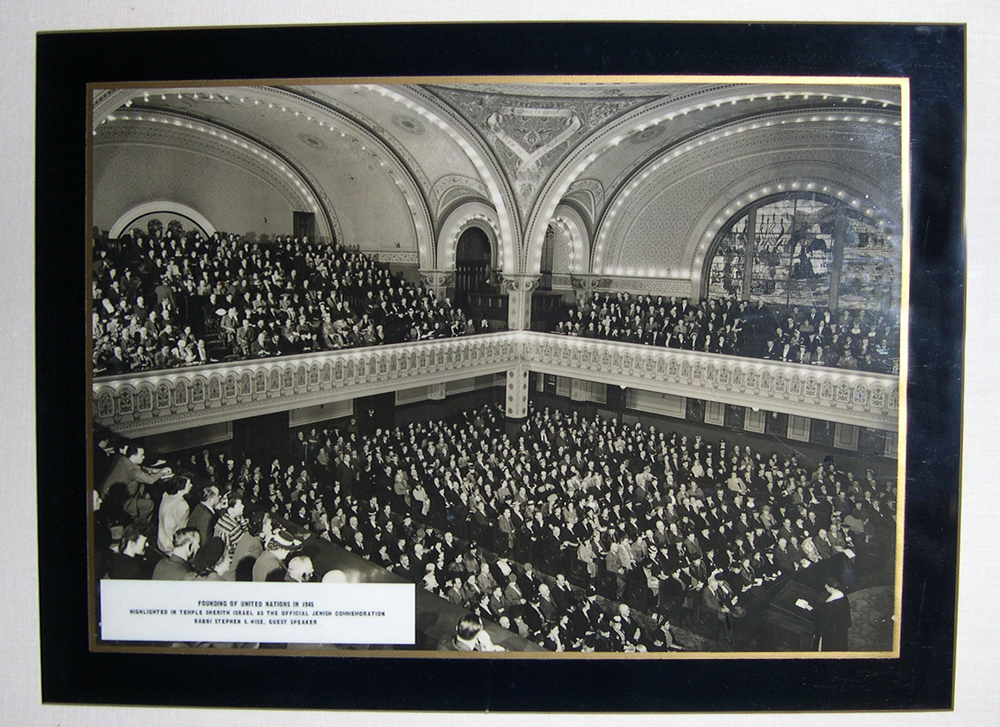
. . . which is how the sanctuary looked at the Jewish Commemoration Service for the Founding of the United Nations in 1945. (As every History student knows, the United Nations was founded in San Francisco.) This picture hangs proudly in Sherith Israel's new Hall of Remembrance.
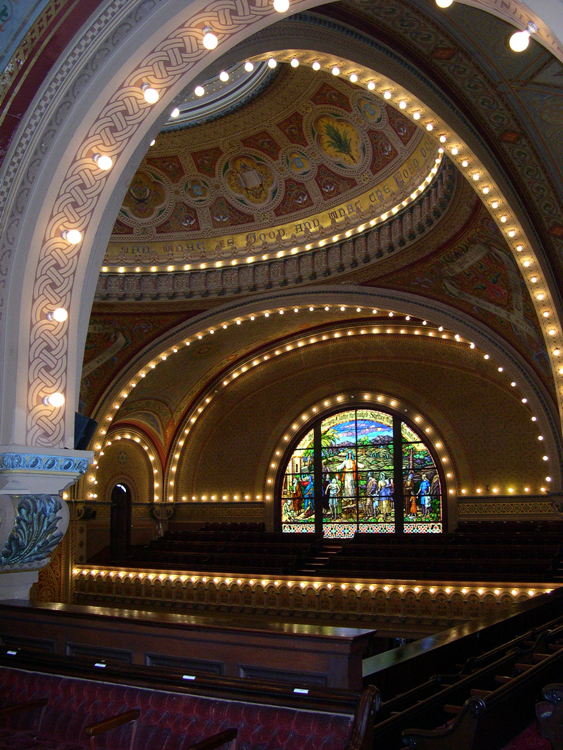
These intersecting arches remind me of Istanbul's Hagia Sofia (which I visited last year, and of which I posted pictures on this Web site).
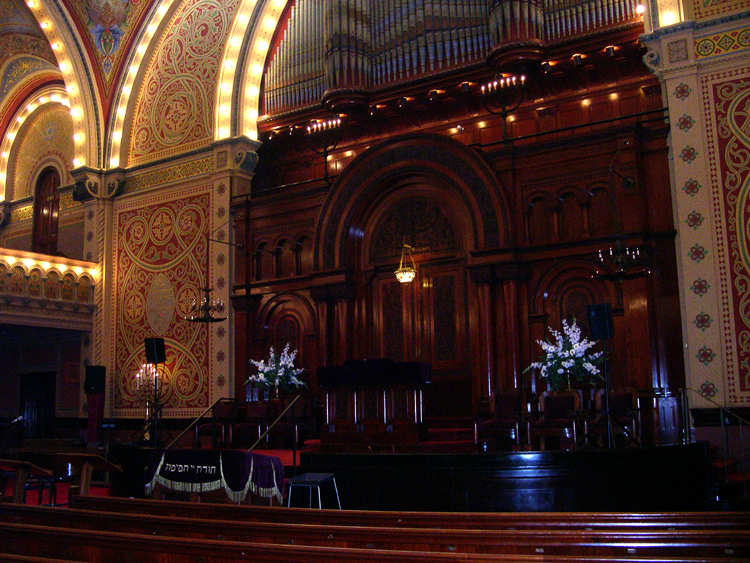
The Torah scrolls, as always, are kept in the Ark in the front of the sanctuary. You can see the organ pipes above the Ark doors.
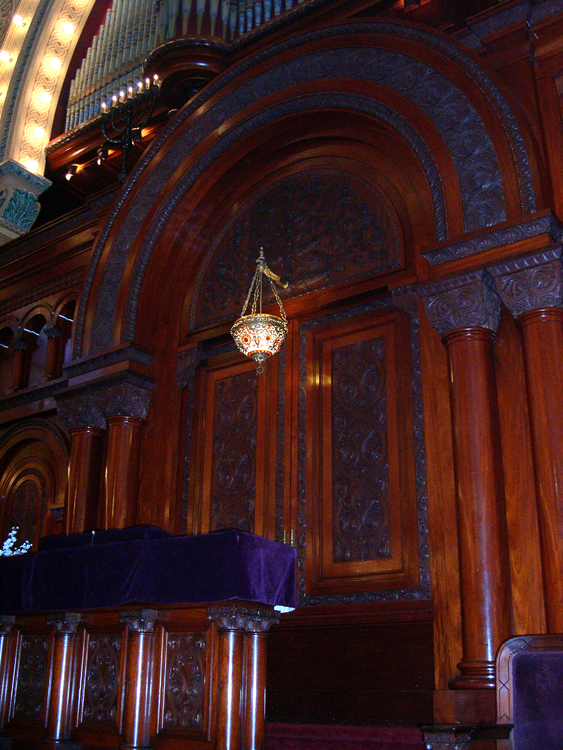
The wood of the doors of the Ark and the surrounding wall is stunningly carved and polished.
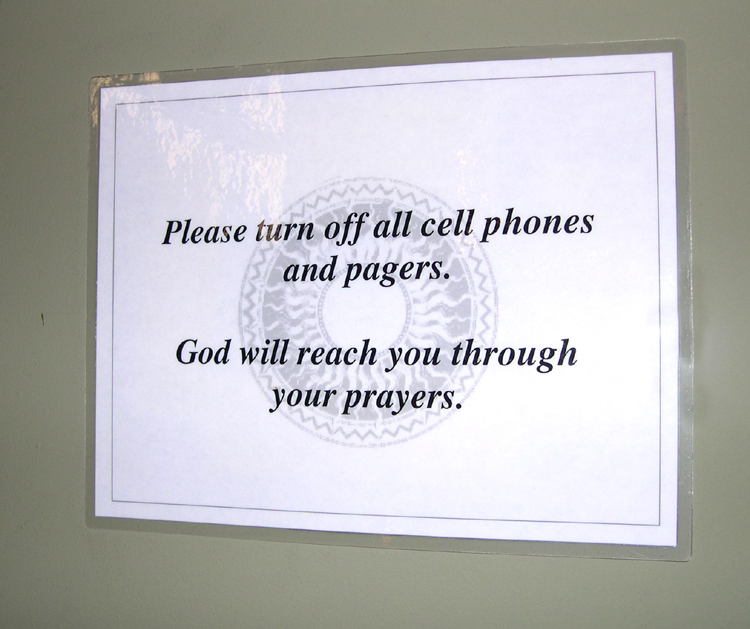
This sign addresses one of my pet peeves -- the use of cell phones in public, especially in venues like churches, theatres, elegant restaurants and funeral homes -- yes, people do. I thought this clever twist on the simple reminder was delightful.

In my opinion, the genius of this remarkable building is the interior of the dome.
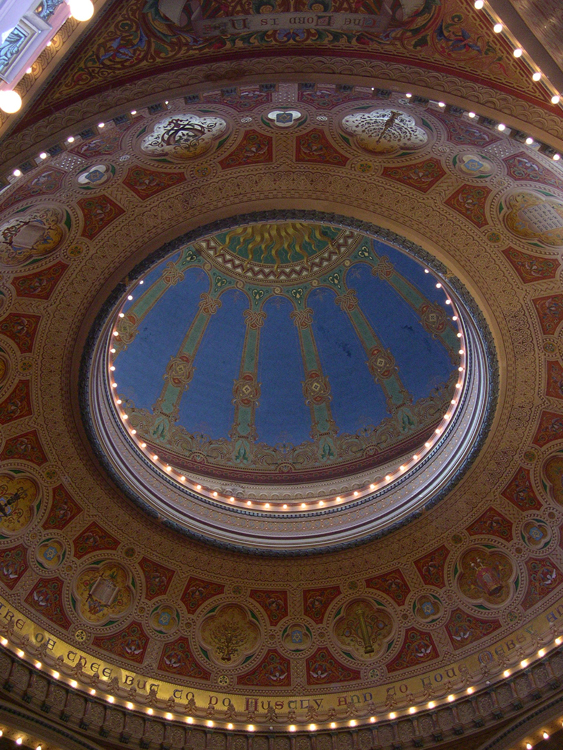
It is impossible to take an all-encompassing picture of the dome with a normal camera lens, as it is quite wide.

It is also impossible to convey through any photograph the stunning effect that the dome seems to float above the rest of the ceiling as you walk through the sanctuary (trying not to stumble over the pews, of course!) looking up at it.
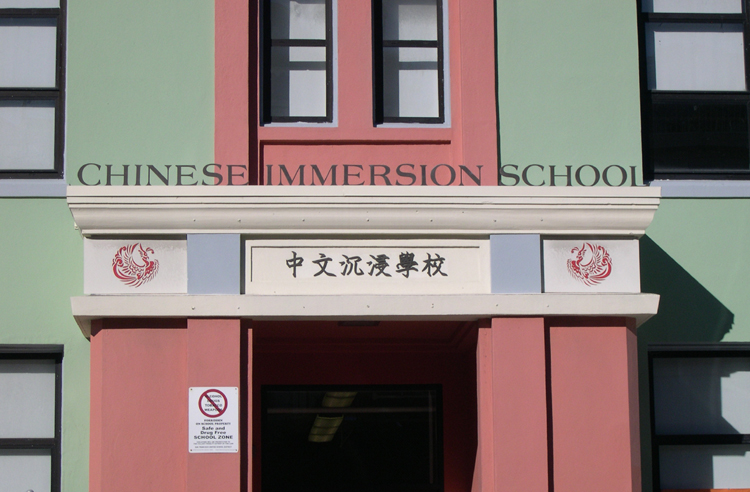
Elswhere in the city, I came upon this curiously-named school, in the Haight-Ashbury district, just North of Buena Vista Park. I feel sure there is both a logical and significant explanation for this name, but as I've never come across it before, my (perverted?) imagination runs wild.
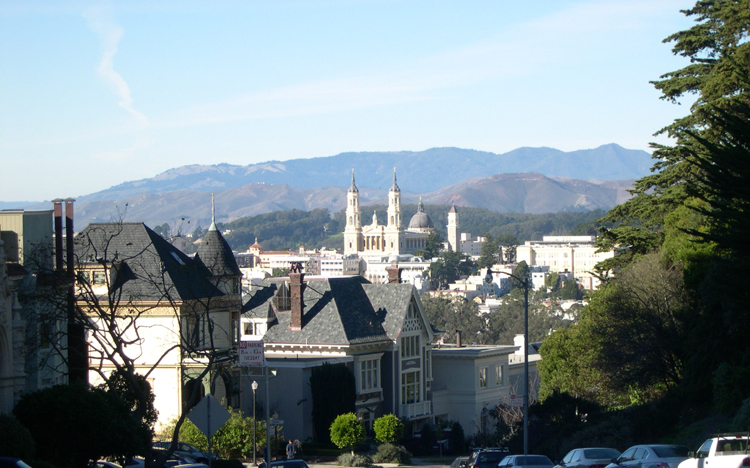
Like many parks in the city (see the Alta Plaza Park stairway pictures above), Buena Vista Park is atop one of the many hills, and views of the city from this vantage point can be spectactular. Here, appearing to rise above its neighborhood, is St Ignatius Church, probably at least a half-mile away.
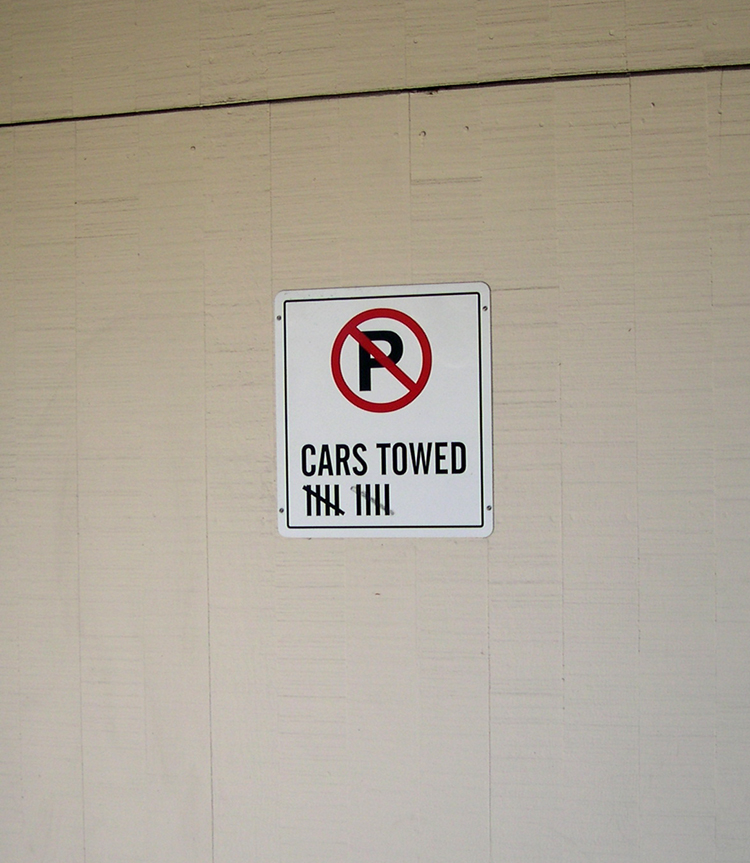
Parking is simply impossible in most areas of San Francisco. Many homes are built above their own garages, and homeowners can get quite creative -- and serious -- about warning people not to park in front of their driveways.
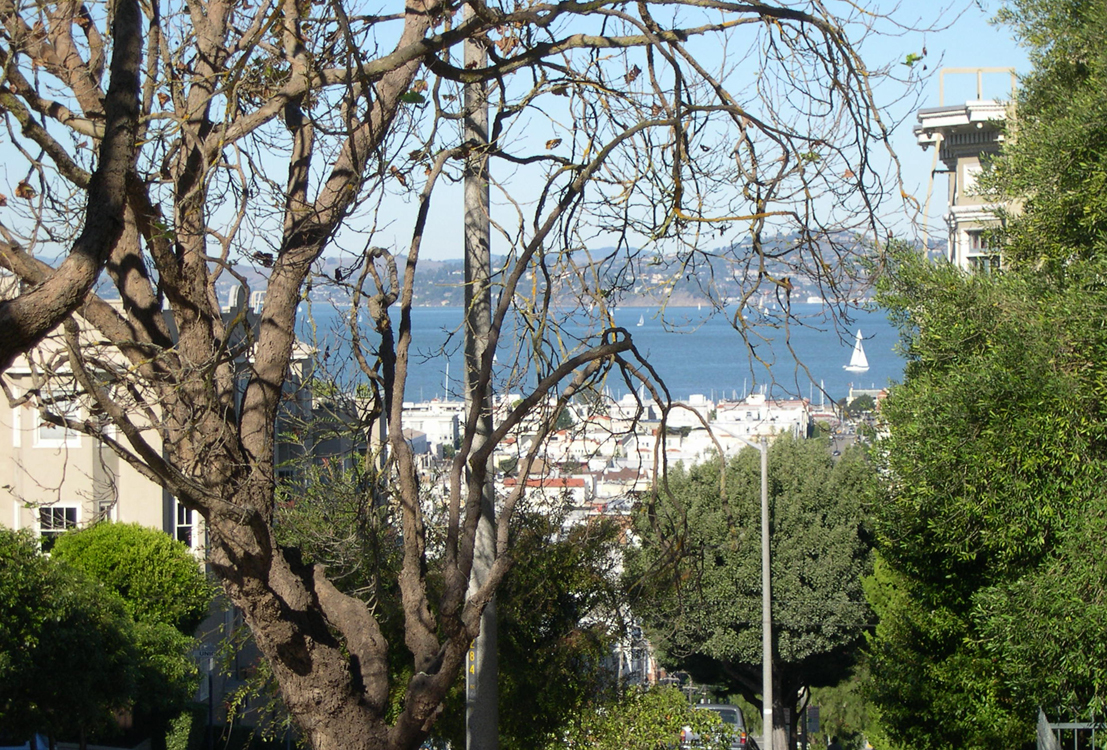
Despite its many steep hills, San Francisco is a very "walkable" city. Views like this are a huge encouragement to take advantage of the city's sidewalks and paths. Here we see the Bay as seen from Scott and Green. The Golden Gate is to the left of this Northward view.

Across the Bay is charming Berkeley. Fall weather has done its job on this tree's leaves.

The frequent Northern California rain keeps both cultivated and wild plants about as green as they can be.

Most older folk will remember (and some will continue to disparage) Berkeley as a focal point for the protests and spirit of revolution that characterized the 1960s. The Haste Street side of Berkeley's Amoeba Music -- The World's Largest Independent Record Store -- is completely covered by a mural that commemorates that era and all its good and bad elements.
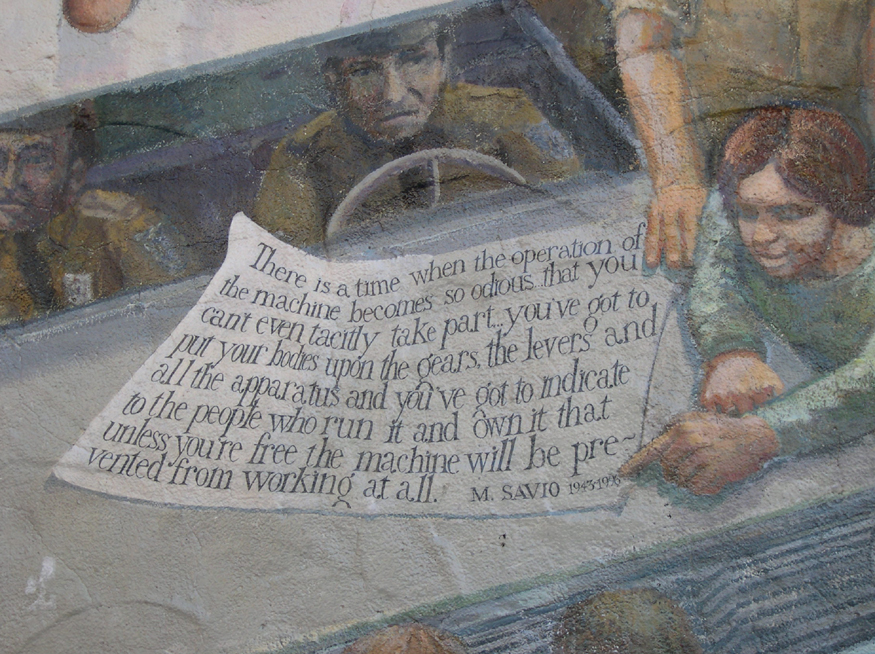
This portion of the Amoeba Music building mural contains an excerpt from a speech by Mario Savio (1942-1998), the unoffical spokesman of Berkeley's student passion for change.
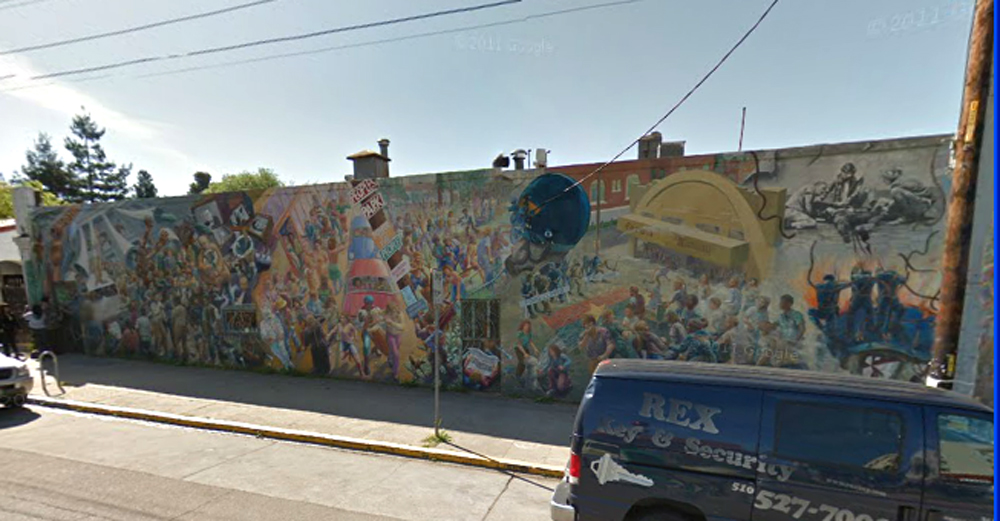
This view, taken from a Web site (not by my camera) shows the entire mural, half a block long. (You may need to scroll to the right to see the whole picture.)
See www.berkeleyplaques.org/index.php?page=telegraph-avenue for details on this mural and its creators.
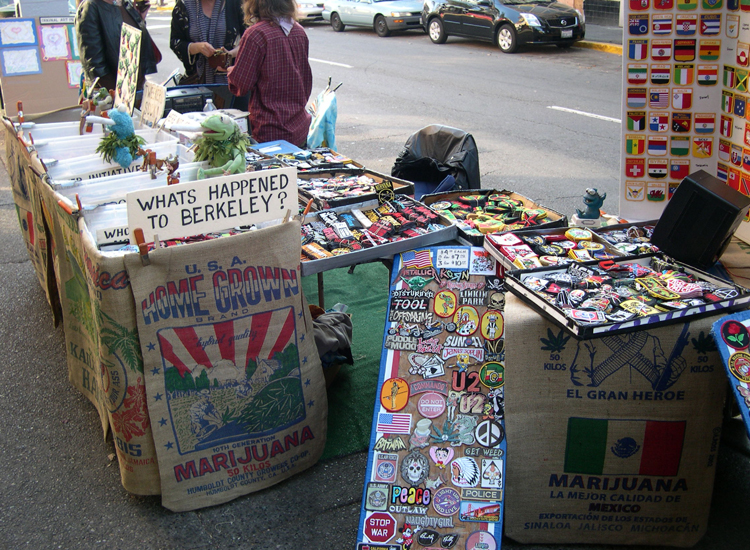
Just around the corner from the mural, a vendor hoping to make money by selling loads of souvenirs and trinkets has posted this sign. Some would say commercialism, like this very operation, is what's happened to Berkeley.

I was aware of this remarkable and historic building from an earlier visit to Berkeley, when I noticed it on a weekday and, as it was closed, could not go inside. I planned this trip so that I'd be here on a Sunday, and taking the trouble to make that happen was well worth it.
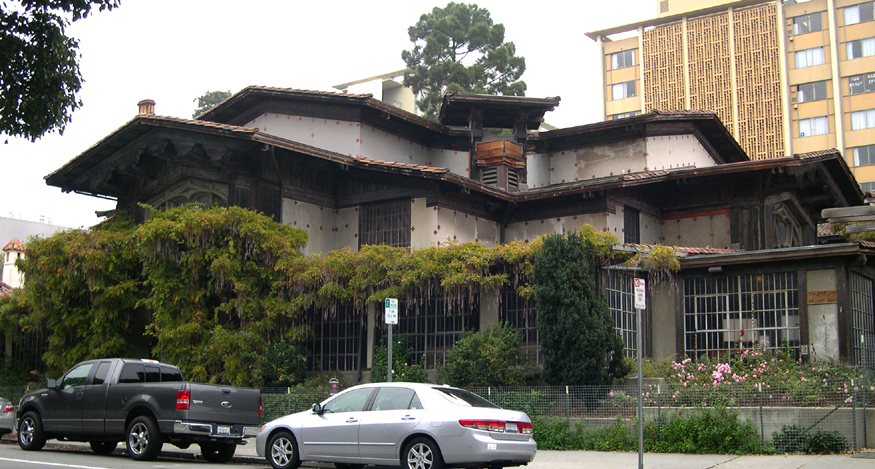
You almost don't notice just how different this building is, probably because of all the vines and trees growing around it.
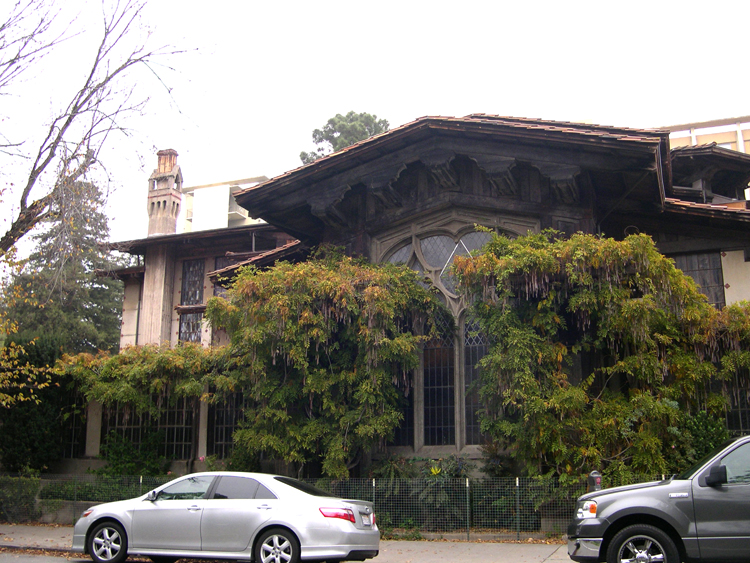
Once you do notice, however, you get drawn in to its uniqueness, its blend of different styles, and you begin to realize that this is no ordinary building. The fact that it's a church, and was originally designed as such, is the next surprise -- or at least it was for me. (Somehow, at first glance, it looks more like a community meeting hall or art museum, or maybe even a very grand private home.)

This is one of those buildings that in no way prepares you on the outside, for what you will encounter inside.
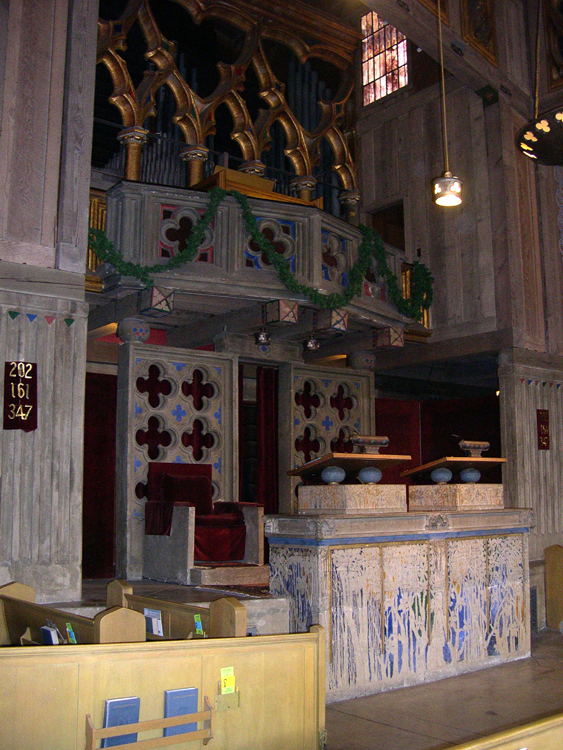
I can do no better than just to let the next few pictures speak for themselves. Except to say this: my pedestrian pictures don't begin to duplicate the experience of sitting in this space and letting its atmosphere soak in.
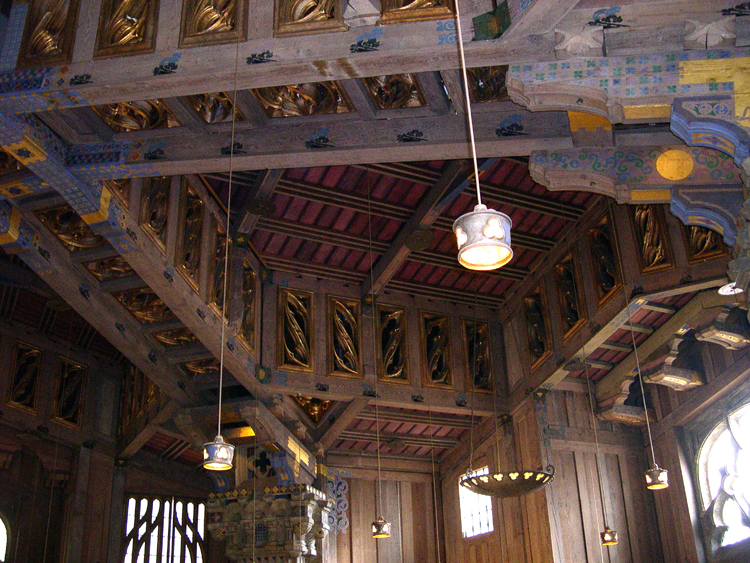
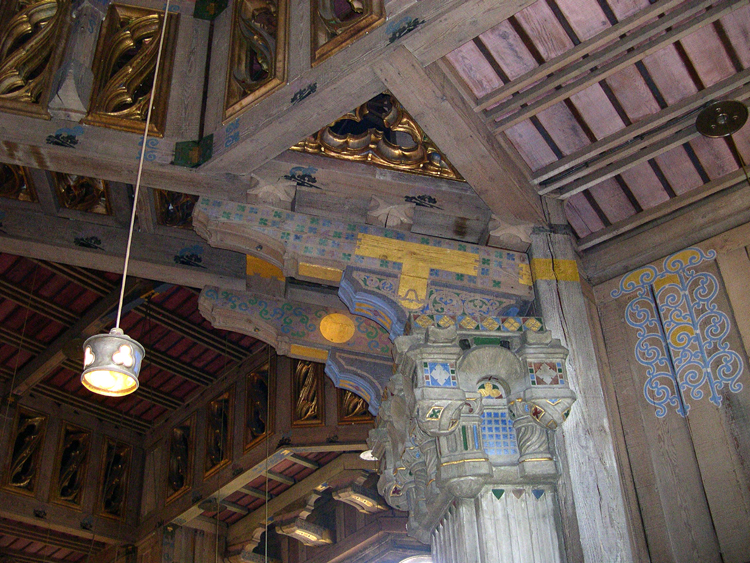
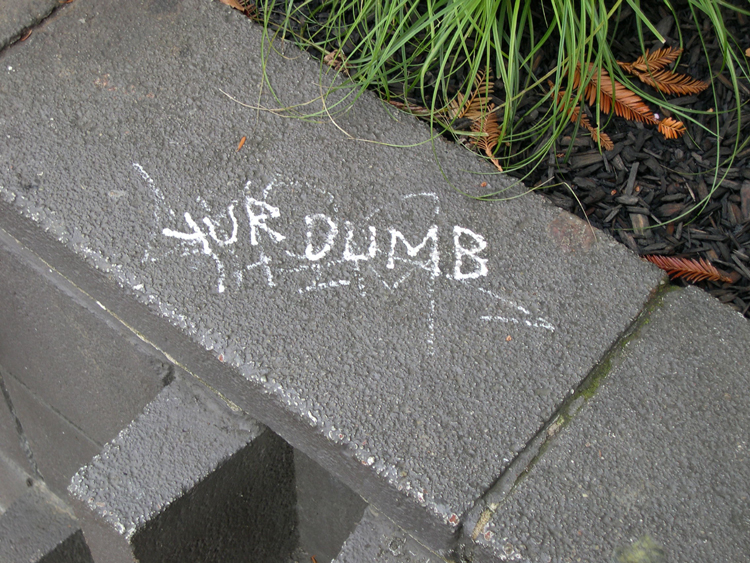
Near the campus entrance to the University of California, someone has left some revealing graffiti. (Let's hope that this was not inscribed by a UC student or, if it was, that she or he was expressing a wicked sense of humor.)
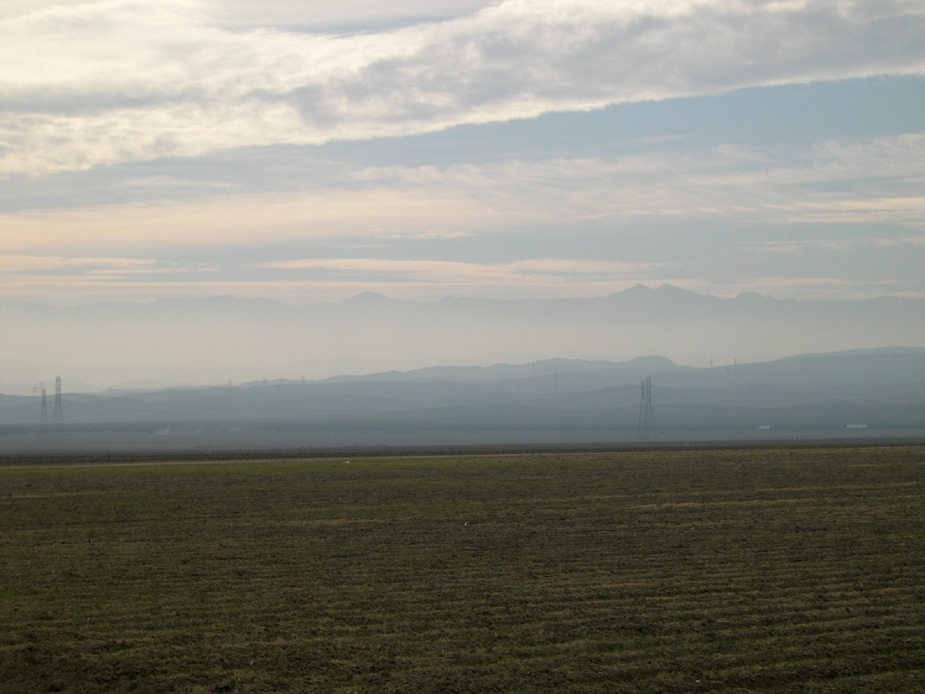
On the way home, one can opt for the scenic Highway 101, or the boring (but quick and efficient) Interstate 5 through the Central Valley. This time I decided on I-5, so this view of layered clouds and misty mountains was a welcome change from the endless dust farms and vegetable rows that separate the gas stations and offramps for endless miles.